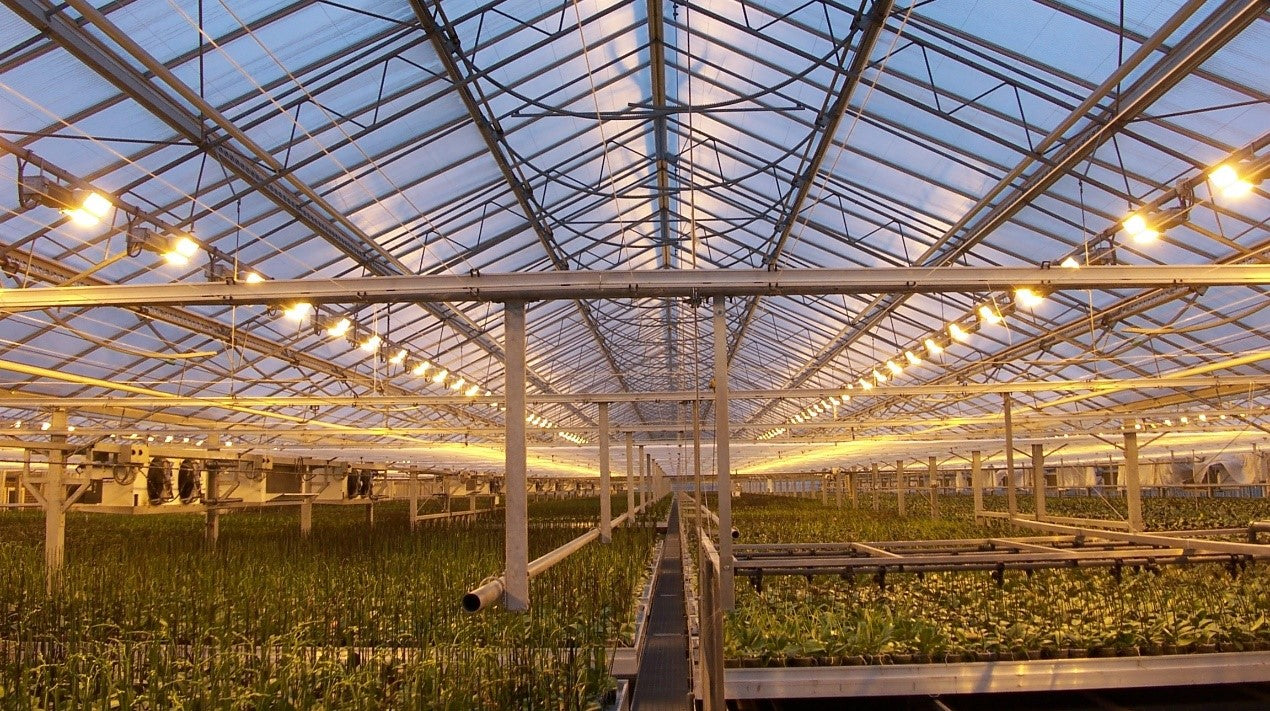
LED Lighting Technology in Plant Growth - Part.4
PART IV: “COLD LIGHT SOURCE”
Before LED lighting technology came to maturity, greenhouses were the major form of artificial plant factories. In greenhouses, temperature condition can be better controlled than plants grown outside, and sunlight is obtained during the day through the transparent plastic. Also, by setting conventional lights in greenhouses, the shortage in sunlight can be covered, and the lighting hours can be extended, thus adjusting the plant’s photoperiodism and finally promoting plant growth and yield.
In traditional greenhouses (Figure.1), the lights are usually placed on the ceiling with quite a distance above the plants. In this case the lights can cover the largest area of plants with minimum number of lights, so the energy and the cost can be saved. However, the drawback is that the luminous intensity may not be high enough to reach the light compensation point, in which case plants cannot grow. In large greenhouses, this can be solved by setting more lights, so that the average luminous intensity per area is increased. Yet traditional lights have low conversion efficiency from electric energy to light energy and also short lifetimes, so more lights mean more cost in fixtures and electricity consumption. Besides, during the energy conversion, traditional lights generate heat not only from the energy loss, but also from the emission of invisible infrared radiation. The heat accumulates and raises the temperature within the greenhouse, which is harmful to plant growth. What’s more, due to the infrared part from traditional light’s radiation spectrum, the lights have to be placed away from the plants, in which case the luminous intensity cannot be increased by shrinking the distance. These properties determine that traditional lights can only play a supplementary role in greenhouse lighting.

Figure 1. Application of traditional lights in greenhouse
As explained in our last post on light quality, the LED differs from traditional light sources in how it illuminates. The optical properties of LEDs are decided by energy band of the semiconductor material, making it highly customizable in spectrum, which helps meet the requirements for plant growth. What’s more, the LED can be easily made as “cold light source” without any infrared radiation, so the surrounding temperature of plants is not affected too much even the LED is placed very close to the plants. Combined with high energy conversion efficiency and high customizability, LED lighting technology raises possibilities for plant factory design. Therefore, new types of factories such as vertical farms, urban farms and growing chambers emerge, which are totally isolated from the outside. With more artificial factors being controllable and more studies on plant growth being conducted, an agricultural revolution is firmly grounded and is about to come.

Figure 2. Future vertical farm based on LED lighting technology
(Source: http://edition.cnn.com/2016/09/05/world/aerofarms-indoor-farming/index.html)

Figure 3. Growing chamber based on LED light technology
(source: http://www.conviron.com/products/mtr30-reach-in-plant-growth-chamber)

Comments
Leave a comment